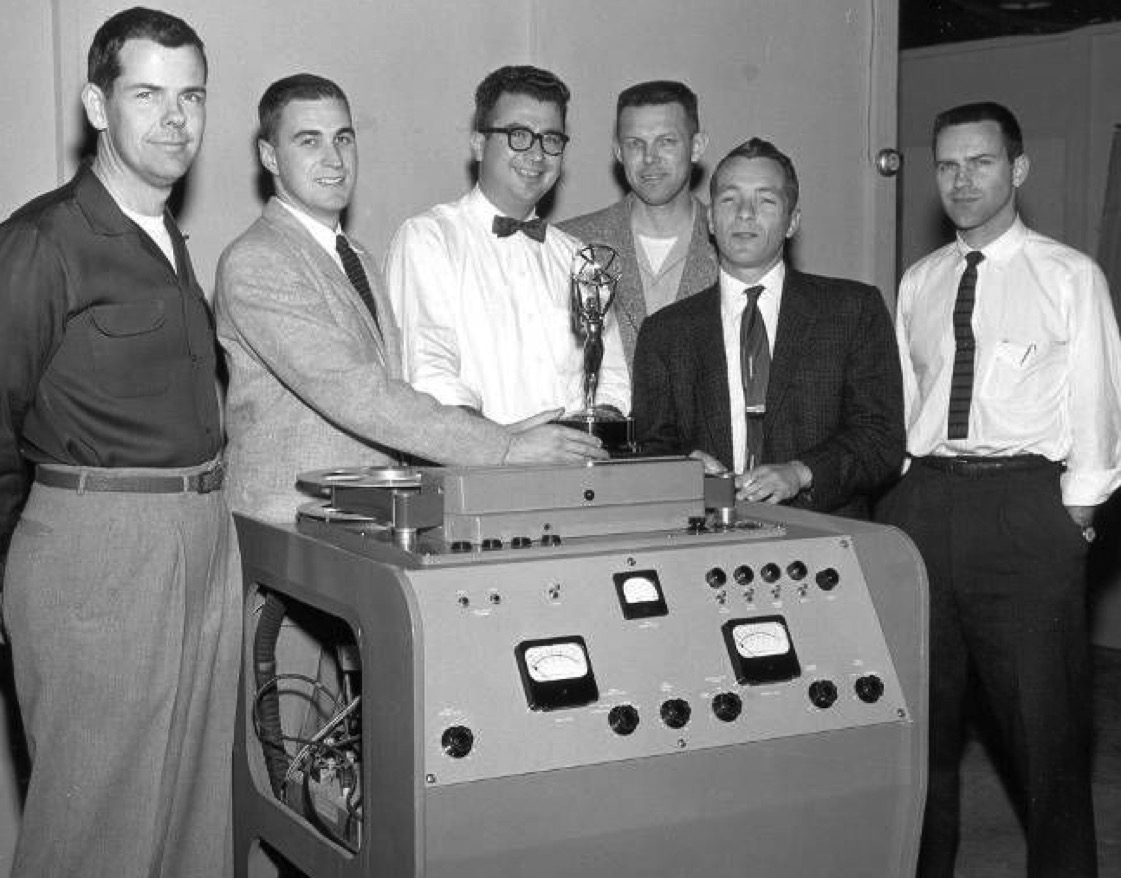History (1956): Ampex Rotary-Head Delivers High-Quality Video
Quadruplex recorders serve as professional video standard for 25 years.
This is a Press Release edited by StorageNewsletter.com on March 2, 2018 at 2:14 pmThis article comes from the Computer History Museum.
1956: Rotary-head delivers high-quality video
Quadruplex recorders serve as professional video standard for 25 years
Ampex team & Emmy award (1957)
(AES Historical Committee)

Early attempts to use fixed-head audio magnetic tape technology to record video for TV applications delivered inadequate performance and reliability.
Several variations of rotary head designs were evaluated until in 1955 a team led by Charles Ginsberg at Ampex employed a transverse scanning topology conceived by audio pioneer Ray Dolby that yielded gratifying results. A spinning drum carried four quadruplex wire-wound, ferrite-core heads that moved in a transverse path across a 2-inch wide tape. Improvements in the head design, coupled with frequency modulation of the video signal culminated in a demonstration of the VRX-1000 at a 1956 broadcaster’s convention in Chicago that stunned an audience with its photographic quality pictures.
The production model VR-1000 was succeeded by the VR-2000 in 1964 and later generations of the design that became the mainstay of TV broadcast networks through the early 1970s. The quadruplex technology was also applied to scientific storage applications in the late 1960s.
The development of helical scanning, in which tracks are recorded at a small angle to the tape path, combined with transistorized electronics yielded a more compact and lower cost machine for less demanding studio and industrial applications in the Ampex VR-660 in 1961.
Competing recorders emerged such as the Sony PV-100 in Japan and International Video Corporation (IVC) Model 800 in the US. Bosch and Philips entered the market in Europe.
Consumer recorder manufacturers engaged in the legendary Betamax vs. VHS video cassette format wars of the 1980s.
Consumer tape recording cartridges, developed for helical scanning heads, were adapted for new data recording applications.
By the 1990s this business grew to about 20 manufacturers worldwide, but then subsequently declined.













 Subscribe to our free daily newsletter
Subscribe to our free daily newsletter
